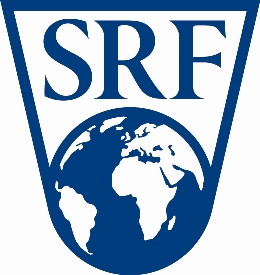Dataskyddspolicy för Grönlandsresor
Allmänt
Grönlandsresor AB org.nr 556671-4191, värnar om din personliga integritet. Du ska alltid kunna känna dig trygg när du lämnar dina personuppgifter till oss. Med denna Personuppgiftspolicy beskriver vi hur vi säkerställer att dina personuppgifter behandlas i enlighet med tillämplig lagstiftning.
Personuppgiftsansvarig
Mikael Grönvik är personuppgiftsansvarig för behandling av dina personuppgifter och ansvarar för att behandlingen sker i enlighet med tillämplig lagstiftning. Vi finns att nå på info@gronlandsresor.se eller på telefon 08-55626970.
Hur vi samlar in personuppgifter?
När du bokar en resa, tilläggstjänst, eller vid personlig kontakt med oss eller när du registrerar dig för nyhetsbrev mm samlar vi in personuppgifter såsom namn, adress, telefonnummer, e-post, kön och födelsedata.
Med vilken grund samlar vi in uppgifterna?
Vi samlar in nödvändiga uppgifter för att kunna fullgöra vårt reseavtal med dig. Om vi inte har en avtalsrelation eller någon annan laglig grund för att hantera dina personuppgifter som stöd, har du gett ditt samtycke för oss att behandla dem för att kunna skicka nyhetsbrev t.ex.
För vilka ändamål samlas uppgifterna in?
Uppgifterna behövs för att vi ska kunna administrera, leverera och tillhandahålla kundservice kring resetjänsten eller någon av de andra tjänsterna vi tillhandhåller. Bl.a. används dina personuppgifter för utskick och tillhandahållande av information via e-post, sms och/eller telefonsamtal för själva resan.
Dina kontaktuppgifter och bokningsinformation kan också komma att användas vid kundundersökningar.
Hur länge sparas informationen?
Efter avslutad resa sparas dina kunduppgifter och resehistorik i 2 år (max två år) om du inte aktivt samtyckt till att vi får behålla dina uppgifter längre. Vi sparar också dina personuppgifter på andra grunder än reseavtal, t.ex. för att följa bokföringslagen. De lagstadgade kraven enligt andra lagar styr hur länge vi måste spara dina uppgifter.
Om du har registrerat dig för att få nyhetsbrev kan du när som helst tacka nej till fortsatta utskick.
Vilka andra får tillgång till personuppgifterna?
För att kunna fullgöra vårt avtal, lämnas uppgifterna vidare till de leverantörer som ansvarar för sin del av resan, dvs. flygbolag, hotell, hyrbilsfirma etc. Vi har vidtagit alla rimliga legala, tekniska och organisatoriska åtgärder för att säkerställa att dina personuppgifter hanteras säkert och med en adekvat skyddsnivå.
Personuppgifter i tredje land
Vi arrangerar resor till hela världen och därför överförs personuppgifter till samarbetspartners eller leverantörer även utanför EU/EES. När detta sker vidtas alla rimliga legala, tekniska och organisatoriska åtgärder för att säkerställa att dina personuppgifter hanteras säkert och med en adekvat skyddsnivå även i länder utanför EU. Genom att lämna dina personuppgifter till oss samtycker du till att vi behandlar personuppgifter utanför EU och EES och är medveten om att lagstiftning för skydd av personuppgifter kan vara lägre än inom EU och EES.
Säkerhet
Vi vidtar lämpliga säkerhetsåtgärder för att skydda dina personuppgifter mot förlust eller obehörig åtkomst, användning, ändring eller röjande. Vi arbetar löpande med ”inbyggt dataskydd och dataskydd som standard”.
Dina rättigheter
Du har rätt att begära tillgång till och rättelse eller i vissa fall radering av dina personuppgifter, begära begränsning av fortsatt behandling av dina personuppgifter samt en rätt att invända mot behandlingen. Vi kommer i så fall att underrätta varje mottagare till vilken personuppgifterna har lämnats ut om eventuella rättelser eller radering av uppgifter samt begränsning av behandling av uppgifter i enlighet med ditt önskemål.
Du har rätt att, genom en skriftligt undertecknad ansökan, kostnadsfritt erhålla ett registerutdrag om bland annat vilka personuppgifter som finns registrerade om dig, ändamålen med behandlingen och till vilka mottagare uppgifterna har lämnats eller ska lämnas ut.
Vi kommer på din begäran eller på eget initiativ att rätta, avidentifiera, radera eller komplettera uppgifter som upptäcks vara felaktiga, ofullständiga eller missvisande.
Om du inte vill att vi behandlar dina personuppgifter för t.ex. direkt marknadsföring har du rätt att när som helst återkalla ditt samtycke och/eller avregistrera dig i våra marknadsföringsmeddelanden. När vi har mottagit din återkallelse kommer vi att upphöra med att behandla personuppgifterna för det ändamål du lämnade ditt samtycke.
Du har rätt till dataportabilitet, det vill säga en rätt att begära att dina personuppgifter överförs till någon annan.
Du har rätt att inge klagomål till Integritetsskyddsmyndigheten (IMY) om du anser att vi inte behandlar dina personuppgifter på korrekt sätt. Läs mer på www.imy.se.
Cookies
Denna sida använder cookies för att samla in statistik om hur sidan används, vilka typer av enheter och upplösning etc. Vi identifierar ingen enskild individ.
Stäng »

(1960x1080).jpg)
(1960x1080).jpg)
(k).jpg)
(1200x676)(low).jpg)
(2000x1127).jpg)
.JPG)
.jpg)
(k).jpg)
(1200x676)(low).jpg)
(turned)(2000x1089).jpg)
